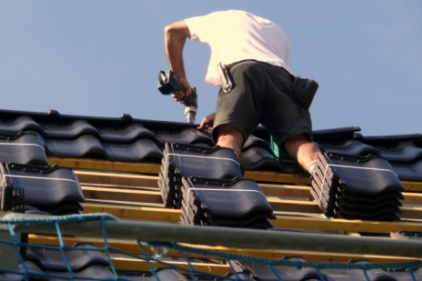 Falls from heights are the most common cause of injury and death. Causes include: working on a scaffold or platform without guard rails or without a safety harness correctly attached; fragile roofs; and ladders that are badly maintained, positioned and secured.
Falls from heights are the most common cause of injury and death. Causes include: working on a scaffold or platform without guard rails or without a safety harness correctly attached; fragile roofs; and ladders that are badly maintained, positioned and secured.
Working on roofs — wide-span industrial roofs are a particularly danger; for example, workers can fall from the roof edge or through gaps in a partially completed roof. Many roof assemblies are, or can become, fragile, unable to safely support the weight of a person and any load they are carrying. Asbestos cement, fibreglass and plastic generally become more fragile with age, and steel sheets may rust. Sheets on poorly repaired roofs might not be properly supported.
What can be done:
- the best way to prevent a fall from or through a roof is not to go on it in the first place. If the work needs to be done, ask whether it be done without going on the roof or whether the amount of time on the roof can be reduced? It may be possible to partially assemble roof sections at ground level;
- protective measures may be required at the roof edge, openings, access points to the roof and where there are fragile roof lights;
- weather conditions should be taken into account as icy, wet or windy conditions can significantly increase the risk of people or material falling;
- falling material can kill — nothing should be thrown from a roof: use enclosed rubbish chutes, or lower material to the ground; do not let material that could fall accumulate; prevent access to danger areas underneath the roof; use debris netting, covered walkways or similar safeguards to stop falling material causing injury; where possible, avoid carrying large and heavy objects onto roofs;
- work on old roofs needs careful planning. You should: identify fragile parts of the roof; identify preventive measures; where necessary, liaise with the client; carry out a structural survey in some cases; and in all cases carry out a risk assessment.
Source: European Agency for Safety and Health at Work







